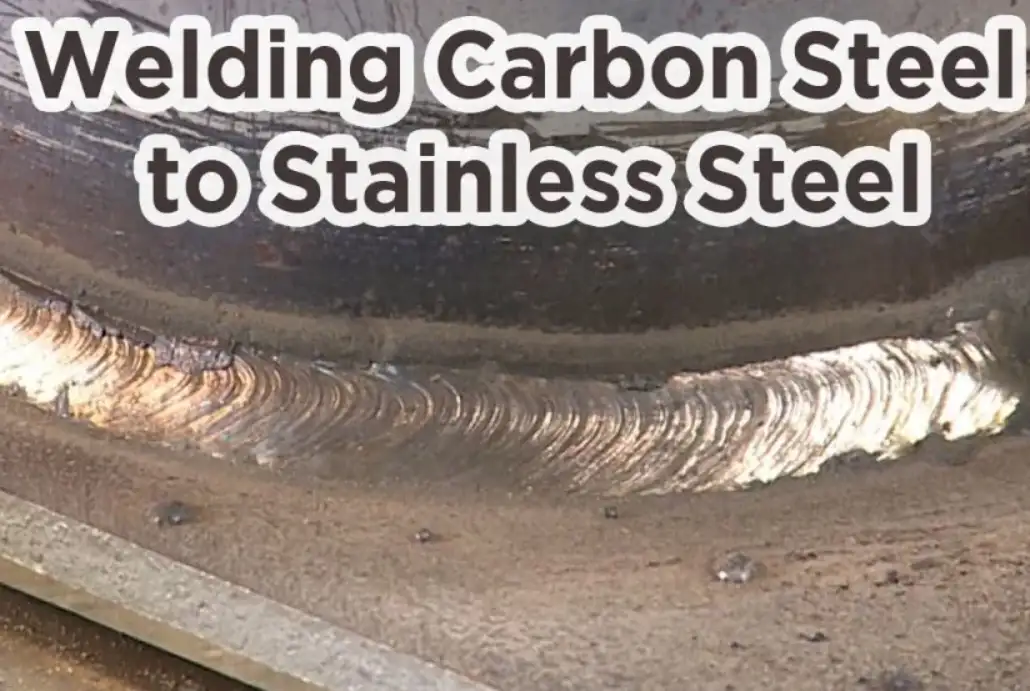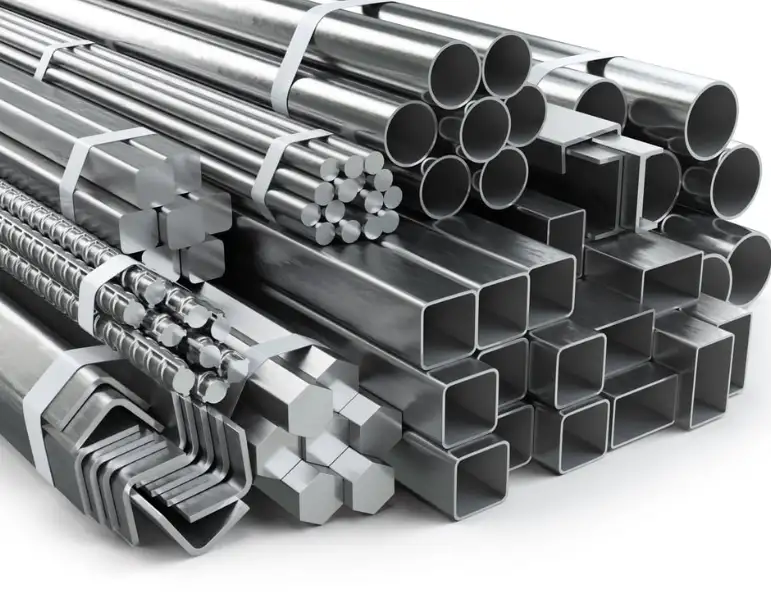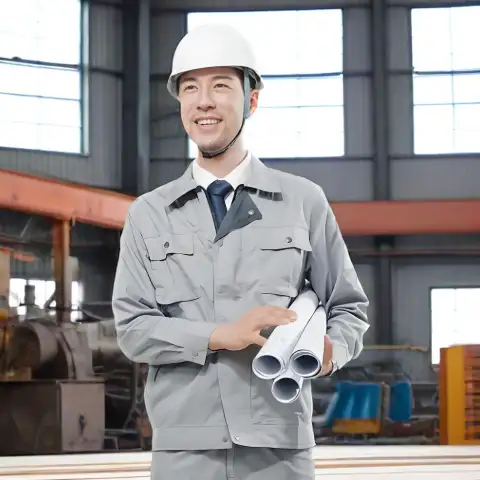Can You Weld Stainless Steel to Carbon Steel? Yes! stainless steels can be welded to carbon (mild) steels reliably when the correct consumables, welding procedure, and corrosion-control strategy are used. The routine industry practice is to use transition filler metals (typically ER309/309L family, sometimes Inconel for demanding service), control dilution and heat input, qualify the welding procedure per the applicable code (ASME/ASME IX, AWS D1.6 or the governing code for the structure), and plan for galvanic-corrosion prevention at the assembly level. When those steps are followed, dissimilar welds deliver acceptable mechanical performance and long service life; when they are ignored, failures from cracking or corrosion are the typical outcomes.
Why stainless-to-carbon welds are needed
-
Flanged transition pieces and reducers where stainless corrosion resistance is required in the wetted zone while carbon-steel piping continues upstream or downstream.
-
Exhaust systems, heat-exchanger connections, and jackets where part of the assembly must resist high-temperature oxidation or corrosion.
-
Structural connections where stainless decorative/fabricated parts are attached to carbon-steel frames.
-
Repair and retrofit operations where removing the existing carbon structure is uneconomical.
These applications are common across power generation, petrochemical, food processing and building services. The engineering decision to weld dissimilar metals is usually a compromise between cost, corrosion resistance, and fabrication simplicity.
Metallurgical background — what makes this a special case?
Key differences to remember:
-
Chemistry: Austenitic stainless steels (e.g., 304/316) contain significant chromium and nickel; carbon steels contain very little Cr/Ni. Welding causes dilution of the weld metal with base metals; the final weld chemistry determines corrosion behavior and microstructure.
-
Phase transformation: Carbon steels can form martensite and can require preheat/postheat to avoid hydrogen-induced cracking; most austenitic stainless steels are non-hardenable and do not require preheat. This creates a preheat/postheat conflict across the joint that must be resolved in procedure design.
-
Thermal expansion and residual stress: Stainless alloys often have higher coefficients of thermal expansion than carbon steels — welds therefore see different strain development, which can drive cracking in brittle filler or weld zones if not accommodated.
-
Galvanic potential difference: Stainless steels are more noble; in wet environments a stainless/carbons assembly can set up galvanic corrosion — leaving the carbon steel to corrode preferentially if not designed correctly.

Can you weld them?
Yes, but the weld metal must be chosen so that:
-
It contains enough alloying (Cr, Ni, Mo) to resist excessive dilution and to avoid formation of hard, brittle mixed microstructures near the carbon steel side.
-
It provides a mechanical property match (or slight overmatch) to the weaker parent metal.
-
The welding procedure treats the most restrictive parent metal for things such as preheat, interpass temperature and welder qualification.
This is why filler metals such as ER309 / ER309L / ER312 are commonly recommended for austenitic stainless to carbon steel joints. These fillers introduce more chromium and nickel so the weld metal resists cracking and dilution issues. In highly demanding mechanical or thermal cycles, nickel-base fillers (e.g., Inconel family) are sometimes used as a transition layer.
Common welding processes and how they compare for dissimilar joints
| Process | Pros for SS→CS | Cons / limitations |
|---|---|---|
| TIG (GTAW) | Excellent control of heat input and dilution, good for root passes and thin sections. | Slower, requires skill; not ideal for heavy section production. |
| MIG/GMAW (solid or flux-cored wire) | Fast, easy to mechanize; available in ER309L wires and 309LSi for dissimilar welds. | May increase dilution without careful technique; shielding gas selection matters. |
| SMAW (stick) | Versatile for field repairs; 309L sticks exist and are used to qualify PQRs. | Slag removal, lower deposition efficiency; operator skill varies. |
| Laser or TIG+filler hybrid | Minimal heat input, narrow HAZ — can reduce corrosion risk on carbon side. | Cost, joint fit-up demands. |
| Brazing / Metallurgical bonding | Avoid many fusion-welding metallurgical issues; good when strength is moderate. | Lower joint strength, not suitable where fusion weld strength is required. |
Practical rule: use a process that allows control of heat input and weld pool mixing so you can minimize dilution of the transition filler and avoid unacceptable microstructures on the carbon-steel side.
Filler-metal selection — the standard options and why they work
Recommended fillers (typical applications)
-
ER309 / ER309L (austenitic stainless): the standard “first choice” for joining common austenitic stainless (304/316) to carbon steels. It supplies higher Cr/Ni to resist dilution and reduces the risk of martensite/ hardness near the carbon side. Good for most service conditions.
-
ER312: higher strength and different ferrite balance; sometimes used where strength is more important.
-
ER316L family: not ideal as a transition filler because lower Cr/Ni compared to 309; choose 316 only when both parents are 316 and the joint is minor.
-
Nickel-base fillers (e.g., Inconel 82/182, Inconel 625 family): used for severe temperature or corrosion environments, or when thermal expansion mismatch and cracking risk are unacceptable. They provide a corrosion- and crack-resistant buffer and are common in thermowells and boiler applications.
Selection principles
-
Match or slightly exceed the lower mechanical requirements (weld metal should be at least as strong/tough as the weaker parent).
-
Provide sufficient alloying to prevent brittle phases and to provide corrosion resistance in the expected service environment.
Fit-up, preparation and joint design
-
Butt welds with a moderate bevel are preferred for pressure-tight applications: they allow control of dilution and permit full penetration using the chosen filler.
-
Backing or buttering layers: For difficult combinations, first deposit a buttering layer of nickel-base filler or ER309 onto the carbon steel to create a graded transition; then weld stainless to the buttered area. This reduces dilution of the final weld metal with the carbon base.
-
Cladding: In some designs it’s wiser to clad carbon steel components with a stainless overlay rather than make a fusion joint — cladding minimizes exposure of carbon steel and avoids a continuous galvanic path.
-
Cleanliness: Remove mill scale, heavy rust, oils and coatings in the immediate weld zone; oxide layers hamper proper fusion and favour defects. Stainless surfaces must be handled to avoid contamination from mild steel tools.
Heat control — preheat, interpass temperature and post-weld heat treatment (PWHT)
This is frequently the trickiest part: carbon steels often benefit from preheat to avoid hydrogen cracking, but stainless steels can be damaged by high temperatures (sensitization) and generally do not need preheat.
How to resolve the conflict:
-
Follow the most restrictive requirement for preventing cracking — typically the carbon steel side. If the carbon steel requires preheat, apply careful controlled preheat localized to carbon side only, minimize temperature at stainless side (use chill bars, local heating techniques or buttering).
-
Limit interpass temperature to a level that avoids sensitization of the stainless side (for austenitics, avoid long exposures in the 450–850°C range if you must). Use low-heat processes (laser, pulsed TIG) to minimize dwell in sensitization ranges.
-
PWHT: uncommon for austenitic stainless; for low-alloy steels sometimes required. If PWHT is needed for the carbon steel, the compatible filler and design should be chosen to tolerate the chosen PWHT cycle. Always check the governing code.
Corrosion and galvanic-control strategies
The problem: Stainless steel is more noble than carbon steel; in electrolyte (wet) environments a galvanic cell will favor corrosion of carbon steel near the joint, sometimes aggressively.
Mitigation approaches:
-
Coatings: paint or coat the carbon steel and, if practical, coat the stainless as well near the joint to break direct electrical contact. Only coat the carbon steel where necessary to keep anode/cathode area ratio favorable.
-
Isolation: use non-conductive gaskets, sleeves or dielectric bushings on fasteners and bolted joints.
-
Design for area ratio: keep carbon area large compared to stainless (large anode to small cathode) to slow galvanic attack; avoid small patches of carbon directly attached to large stainless components in sea/wet service.
-
Drainage & ventilation: avoid crevices and water traps at the weld zone; design details to shed fluid and permit drying.
-
Material choice and sacrificial protection: in some systems add sacrificial anodes or accept routine inspection/replacement of a localized anode element.
Note: surface finish and weld-profile matter: a rough weld that traps moisture accelerates local attack. Painting or cladding the carbon side a short distance from the joint (25–40 mm is commonly recommended) is a simple mitigation.

Qualification, codes and NDT
-
Qualification is mandatory for critical work. Use ASME Section IX (for pressure/vessel work) or AWS structural codes as applicable (AWS D1.6 is the stainless structural code and governs stainless weld qualification; carbon-to-stainless joints typically fall under dissimilar welding rules and must be qualified).
-
Test coupons should use the exact parent materials and filler metal(s), same welding process, and the welding parameters that match production: this proves mechanical and metallurgical acceptance.
-
Common NDT methods: visual, dye-penetrant for surface cracking, magnetic particle on carbon steel side (not on austenitic stainless), radiography for volumetric defects, ultrasonic (with attention to differing acoustic properties). Chemical analysis / corrosion coupons may be used in service validation.
-
Metallurgical examination may be required for critical dissimilar welds to ensure no low-toughness microzones exist near the carbon side.
Typical problems and remedies
| Problem | Likely cause | Practical remedy |
|---|---|---|
| Weld cracking near CS side | Excessive dilution / martensite / hydrogen cracking | Use ER309L, control heat input, preheat CS if necessary, bake electrodes, minimize hydrogen sources. |
| Accelerated corrosion at joint | Galvanic coupling + trapped moisture | Coat carbon steel, isolate electrically, design for drainage, use large anode area ratio. |
| Sensitization of SS (intergranular corrosion) | Long residence in 450–850°C range | Minimize heat input, reduce interpass times, use low-carbon fillers (e.g., 309L), avoid PWHT cycles that promote sensitization. |
| Porosity on SS side | Shielding gas contamination / surface oils | Clean surfaces, use correct shielding gas (argon-rich), ensure gas flow and nozzle condition. |
| Hard, brittle HAZ on carbon steel | Fast cooling / martensite formation | Preheat, control interpass temperature, use appropriate filler. |
Practical step-by-step welding procedure
-
Identify base metals and service environment.
-
Select filler (ER309L common; consider nickel-base for extreme service).
-
Decide process (GTAW root + GMAW fill is common for production balance).
-
Prepare joint: clean, bevel, fit-up. Remove scale/contamination. Keep stainless separate from CS tooling contamination where possible.
-
Butter or clad carbon side if necessary for severe service.
-
Define and record preheat/interpass limits per most restrictive material (document in WPS).
-
Qualify the procedure with a PQR and any required destructive testing under the governing code.
-
Perform production welds with operator qualified to the same PQR parameters.
-
Inspect visually and with required NDT; conduct corrosion protection measures.
-
Document WPS/PQR and inspection records for traceability.
Tables — quick reference
Table A — Common filler choices and typical uses
| Filler | Typical use | Notes |
|---|---|---|
| ER309L / 309LSi | General transition SS (304/316) → CS | Widely used; good dilution resistance; low C variants reduce sensitization risk. |
| ER312 | Higher strength dissimilar joints | Use when higher weld strength required. |
| Inconel 82/182 / 625 | Thermowells, high-temp corrosion | Use where Ni buffer reduces thermal mismatch and cracking. |
| ER316L | 316 to 316 welds or low-risk joints | Not ideal as a transition filler for CS→SS. |
Table B — Process & shielding (practical guidance)
| Process | Recommended shielding | Why |
|---|---|---|
| GTAW (TIG) | Argon (2.5–5.0 cfh per nozzle) | Clean, controllable weld pool, low dilution risk. |
| GMAW (MIG) | Argon + small O₂ or CO₂ for short-circuit; trimix for spray when required | Gas choice affects bead shape and oxidation. |
| SMAW | Standard 309L sticks; low hydrogen storage requirement | Field versatility |
Inspection, testing and acceptance criteria
-
Mechanical testing on procedure qualification coupons commonly includes tensile and bend tests, macro etch, and CV/impact tests if low temperature or dynamic loading is expected.
-
Radiography identifies volumetric defects but may miss planar lack-of-fusion near dissimilar interfaces; combine with penetrant or magnetic methods as appropriate.
-
Metallography of representative samples is the only definitive way to check for undesirable phase(s) or dilution profiles in critical service.
When not to weld — alternatives to consider
-
Cladding (weld overlay of stainless onto carbon) when corrosion resistance is localized.
-
Mechanical joining (flanges, couplings) when differential thermal expansion or galvanic issues are dominant.
-
Explosive bonding or diffusion bonding in specialized applications.
-
Replace the carbon part with stainless if corrosion risk or maintenance cost justifies it.
Real-world examples and case points
-
Piping and flanged transitions: common solution is a short stainless spool welded to a carbon flange using ER309L filler for the weld and a dielectric gasket to prevent galvanic coupling.
-
Thermowells and boiler penetrations: often use nickel-base fillers to offset the thermal and corrosion stresses; failures are historically associated with using only 309 in very cyclic thermal environments.
-
On-site repairs: SMAW with 309L rods is a frequent field fix for small joins where a full shop butt weld is impractical. Qualified procedures and welders are still required for pressure systems.
FAQs
1. Is ER309L always the right filler to weld stainless to carbon?
No. ER309L is the most common and economical first choice because of its alloy content that resists dilution problems. But for severe thermal cycles, high-temperature service, or aggressive corrosive environments, nickel-base fillers (Inconel family) or more specialized alloys may be required. Always match filler to service and code requirements.
2. Can I use a standard 316 filler to join 316 stainless to mild steel?
Not recommended. 316 filler has lower alloy content than 309 and will dilute more readily; this increases risk of brittle phases near the carbon side and worse corrosion resistance in the weld metal. Use 309 family for dissimilar joints unless a metallurgical study supports 316.
3. Do I need preheat when welding stainless to carbon steel?
It depends on the carbon steel's hardenability and thickness. Preheat may be required to prevent hydrogen cracking in the carbon steel. The welding procedure must document preheat and the application must control temperature to avoid overheating the stainless side.
4. How do I prevent galvanic corrosion at the joint?
Options include coatings on carbon steel, dielectric isolation, proper area ratio design, cladding, or sacrificial anodes. Coating the carbon steel a short distance from the joint (25–40 mm) is a common practical step.
5. Which codes govern qualification of dissimilar welds?
ASME Section IX (welding procedure and welder qualification) and AWS D1.6 for structural stainless work are commonly referenced; the designer must confirm the applicable code for the project and qualify the exact dissimilar combination under that code.
6. Is cladding a better long-term option?
Often yes for severe corrosion service. Cladding avoids a continuous galvanic contact path and reduces the number of critical fusion joints; however, it can be costlier and requires appropriate procedures.
7. What NDT is best for these joints?
Use a combination: visual + penetrant (surface cracks), radiography or ultrasonic (volumetric), and metallography for microstructure checks if required. Magnetic particle works on carbon steel zones only.
8. Can I weld austenitic stainless to carbon without any filler (autogenous)?
Not recommended for dissimilar combinations because base-metal dilution will produce an under-alloyed weld (on the carbon side) and poor corrosion/ mechanical performance. Use a transition filler.
9. How important is shielding gas selection?
Crucial for GMAW/TIG: argon-rich gases for austenitics reduce oxidation and porosity; small additions of CO₂ or O₂ change transfer mode but can hurt surface finish or corrosion resistance if misapplied.
10. What is the single biggest cause of failure for stainless-to-carbon welds?
Lack of proper procedure qualification and failure to address galvanic corrosion and preheat/interpass conflicts. In practice, poor planning beats metallurgy as the main cause.
Summary — engineering checklist before you weld
-
Identify code and qualification path (ASME, AWS, client spec).
-
Choose filler (ER309L default; nickel if needed).
-
Design for corrosion control (coatings, isolation, area ratios).
-
Resolve preheat/PWHT conflicts in the WPS.
-
Complete PQR and welder qualification — test on the exact materials.
Final practical tips from shop practice
-
Always run a small mockup weld and destructive tests on coupons before mobilizing for production.
-
Record the chemical analysis of each batch of filler (mill certificates) for traceability.
-
For field welds, ensure electrodes and wires are kept dry and the operator follows the PQR parameters tightly.
-
Consider a buttering layer when joining thin or thermally-sensitive sections.
-
When in doubt for safety or pressure systems, consult a welding engineer and reference the exact edition of the controlling code.
Authoritative references
- Nickel Institute — Guidelines for Welding Dissimilar Metals (technical guideline PDF)
- Lincoln Electric — ER309 / ER309L filler metal product and usage data
- AWS D1.6 — Structural Welding Code — Stainless Steel (code overview and requirements)
- Nickel Institute — Managing Galvanic Corrosion (practical prevention and mitigation)

